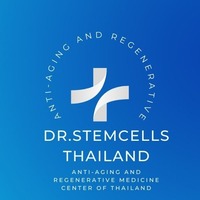Wood’s Lamp (WL)

Wood’s Lamp (WL): Examination and Clinical Applications
Overview
A Wood’s lamp (WL) is a diagnostic tool used in dermatology and other clinical fields, employing ultraviolet (UV) light to reveal changes in skin pigmentation, detect infections, and evaluate metabolic or cosmetic conditions. The examination is performed in a dark room by shining the lamp over affected skin or hair, causing certain pathogens, pigmentary changes, or residues to fluoresce in characteristic colors.
Procedure Steps
Preoperative Preparation and Illumination
- The skin or scalp is cleaned prior to examination to reduce interference from creams, lint, or topical products.
- The Wood’s lamp is illuminated and held close to the area of interest in a darkened environment to enhance fluorescent visualization.
Diagnostic Findings
- Pigment disorders:
- Hypopigmentation (vitiligo, postinflammatory hypopigmentation) appears as bright blue-white.
- Hyperpigmentation (melasma, lentigines) shows sharper borders under examination, clarifying dermal vs. epidermal deposition.
- Superficial infections:
- Dermatophytes (tinea capitis): Green fluorescence for certain Microsporum species.
- Corynebacterium (erythrasma): Coral-red fluorescence.
- Pityrosporum folliculitis: Yellow-green fluorescence.
- Pseudomonas (burn wounds, infections): Bright green fluorescence.
- Hair and scalp disorders:
- Certain lice nits and hair casts fluoresce white under Wood’s lamp.
- Metabolic and cosmetic applications:
- Assessment of sunscreen coverage, chemical peels, adherence to tetracycline (yellow toenail fluorescence), and cosmetic camouflage.
Closure and Interpretation
- The clinician interprets color changes, intensities, and patterning of fluorescence to support diagnosis or guide management.
- The lamp emits long-wave UV-A light, which is generally safe for brief clinical use.
Post-Examination Care
- There are no adverse effects for most patients.
- Patients with extreme photosensitivity may rarely experience a mild rash; exposure time is minimized and lamp intensity is safe for routine examination.
Clinical Considerations
- The Wood’s lamp is invaluable for diagnosis of pigmentary disorders, infections, and for pre/procedural guidance in cosmetic dermatology.
- Results are quick, non-invasive, and supplement physical exam findings.
Summary
Wood’s lamp examination is a rapid, accessible, and informative tool in dermatology for identifying pigmentary changes, infectious pathogens, and functional skin surface properties. It improves diagnostic accuracy for a range of skin and hair conditions and complements other laboratory tests where indicated.
Consult with Our Team of Experts Now!
For expert Wood’s lamp examinations or advanced pigment/infection analysis, consult board-certified dermatologists or dermatologic surgeons.
References
- PubMed. A Review of Wood’s Lamp in Dermatology. 2022.pubmed.ncbi.nlm.nih
- DermNet NZ. Wood Lamp Skin Examination. 2024.dermnetnz
- WebMD. What Is a Wood’s Lamp Exam? 2023.webmd
- PMC. Revealing the Unseen: A Review of Wood’s Lamp in Dermatology. 2021.pmc.ncbi.nlm.nih
- JCAD. Review of Wood’s Lamp in Dermatology. 2019.jcadonline
- Healthline. Wood’s Lamp Examination: Purpose, Procedure & Results. 2012.healthline















